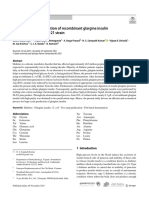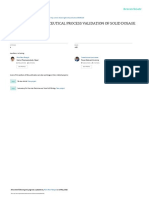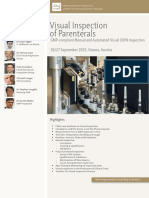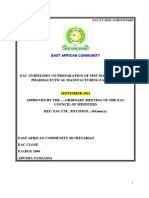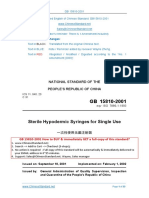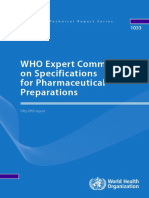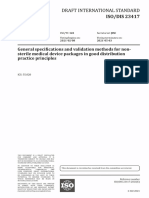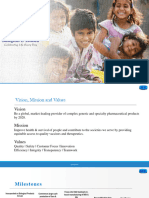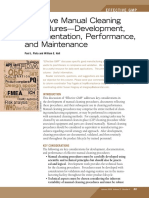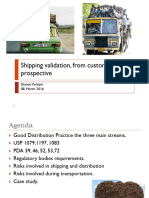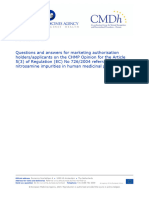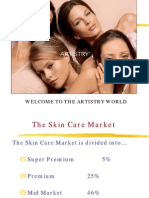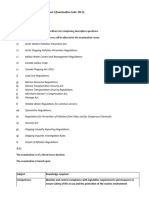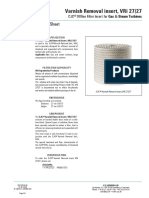0 ratings0% found this document useful (0 votes)
375 viewsSafeBridge ADE White Paper ADI Calculation
SafeBridge ADE White Paper ADI Calculation
Uploaded by
shah241ADI calculation
Copyright:
© All Rights Reserved
Available Formats
Download as PDF, TXT or read online from Scribd
SafeBridge ADE White Paper ADI Calculation
SafeBridge ADE White Paper ADI Calculation
Uploaded by
shah2410 ratings0% found this document useful (0 votes)
375 views4 pagesADI calculation
Copyright
© © All Rights Reserved
Available Formats
PDF, TXT or read online from Scribd
Share this document
Did you find this document useful?
Is this content inappropriate?
ADI calculation
Copyright:
© All Rights Reserved
Available Formats
Download as PDF, TXT or read online from Scribd
Download as pdf or txt
0 ratings0% found this document useful (0 votes)
375 views4 pagesSafeBridge ADE White Paper ADI Calculation
SafeBridge ADE White Paper ADI Calculation
Uploaded by
shah241ADI calculation
Copyright:
© All Rights Reserved
Available Formats
Download as PDF, TXT or read online from Scribd
Download as pdf or txt
You are on page 1of 4
White Paper
Procedures for Determining an
Acceptable Daily Exposure (ADE) under Risk-MaPP:
Approaches for Developing and Documenting Acceptable Limits for
Product Cross-Contamination Purposes
Allan W. Ader, Robert G. Sussman, Tracy A. Kimmel, and Robert H. Ku
SafeBridge Consultants, Inc.
Mountain View, California
and New York, New York
Abstract
From a product safety perspective, multi-purpose pharmaceutical and chemical plant manufacturing operations need
to be able to adequately clean product contact surfaces, in order to prevent contamination from one product to the
next. Contaminants may include active pharmaceutical ingredients (APIs), cleaning agents, decomposition products,
synthetic intermediates, excipients, or other residues. Previous approaches in the pharmaceutical and biotechnology
industries have been to establish safe or acceptable limits based on a percentage of the human therapeutic dose or
of the lethal dose in laboratory animals. More scientifically supportable health-based risk assessment approaches
have recently been issued by the International Society for Pharmaceutical Engineering (ISPE) under their Baseline
Guide
Risk-Based Manufacture of Pharmaceutical Products (Risk-MaPP). The following paper describes the
procedure employed to establish an Acceptable Daily Exposure (ADE) and the scientific rigor needed to establish
defensible ADE values.
Introduction
The ISPE Baseline Guide
Risk-MaPP provides a scientific risk-based approach, based on the International
Conference on Harmonization (ICH) Q9 Quality Risk Management guidelines, to manage the risk of potential cross
contamination in production of active pharmaceutical ingredients and pharmaceutical products. Under Risk-MaPP, a
health-based and scientifically supportable risk assessment is performed to establish an Acceptable Daily Exposure
(ADE). The ADE may be used as the basis for the maximum amount of API or other material that may be present in
the next product. Establishing an ADE for this purpose requires scientific rigor and robust methodology and
includes:
Reviewing relevant toxicological and clinical data available on the API;
Choosing an appropriate point of departure or critical effect for the risk assessment
Using sound scientific judgment to select doses (either from animal or human studies) at the lowest-observed-
adverse-effect level (LOAEL) or no-observed-adverse-effect level (NOAEL);
Employing appropriate risk assessment methodologies, including the selection of defensible safety factors for non-
carcinogenic effects or low dose extrapolation for carcinogenic effects; and
Providing scientifically defensible and transparent documentation supporting the rationale for deriving the ADE.
The Risk-MaPP approach to developing and documenting ADEs will allow drug innovators and suppliers to submit
well researched and scientifically sound risk assessment arguments capable of withstanding peer review and
regulatory scrutiny.
ADE as a Health-Based Risk Assessment
The ADE represents an estimate of a daily exposure that is likely to be without an appreciable risk of deleterious
effects to the potential patient population during an average lifetime. The concept of the ADE is similar to limits
developed by other regulatory or authoritative bodies (as well as individual manufacturers) to define safe or
acceptable limits. For example:
The FAO/WHO sets Acceptable Daily Intakes (ADIs) for additives and pesticide residues in food;
The US Environmental Protection Agency (EPA) sets Reference Concentrations (RfCs) or Reference Doses (RfDs)
as acceptable levels for the general public by inhalation or by oral route of exposure;
The International Conference on Harmonization (ICH) Q3 Guidelines on Residual Solvents describes the Permissible
Daily Exposure (PDE);
The US Agency for Toxic Substances and Disease Registry (ATSDR) determines Minimum Risk Levels (MRL) as
acceptable limits to potentially exposed individuals to contaminants at hazardous waste sites; and
ADE Procedure Under Risk MaPP
October 20, 2010
Page 2 of 4
Pharmaceutical and chemical companies establish Occupational Exposure Limits (OELs) for worker safety purposes.
An ADE is expressed as mg (or g) per day, and may consider sensitive subgroups (e.g., elderly and children)
potentially exposed to contamination from a drug in a prior batch or product. Once calculated, the ADE can then be
employed to establish cleaning limits for equipment and processes used to make the API or drug product. In order to
verify that the ADE is not exceeded, the cleaning limit should take into account the dose of the drug in the next batch,
the total product contact surface of the equipment, and the total batch size.
ADE Equation
For non-carcinogenic chemicals, the values listed above have typically been determined using a common approach;
selecting a NOAEL (mg/kg/day) and applying safety or uncertainty factors to establish the level. ADEs are calculated
in a similar manner using the following formula:
ADE = (NOAEL x BW) / (UF
C
x MF x PK)
where:
BW = Body Weight (kg) [default for an adult is 50 kg];
UF
C
= Composite Uncertainty Factor;
MF = Modifying Factor; and
PK = Pharmacokinetic Adjustment(s).
In cases where a NOAEL is not available, a LOAEL may be used. In the event that a human dose is used in a
derivation, the NOAEL (or LOAEL or Lowest Therapeutic Dose) may be expressed as mg/day and the BW factor
becomes unnecessary. Where sufficient study data are available, other risk assessment approaches may be used,
such as extrapolation from known responses at benchmark doses to pre-defined levels of risk (e.g., 1:100,000) for
carcinogens or applying Thresholds of Toxicological Concern (TTC) for genotoxicants. In many cases, determining
the LOAEL or NOAEL requires significant scientific judgment and interpretation of complex non-clinical toxicology
and/or clinical studies.
Sources of Uncertainty
A composite uncertainty factor is applied to the NOAEL/LOAEL to account for sources of uncertainty, such as:
Intraspecies Differences (interindividual variability) (UF
H
);
Interspecies Differences (UF
A
);
Subchronic-to-Chronic Extrapolation (UF
S
);
LOAEL-to-NOAEL Extrapolation (UF
L
); and
Database Completeness (UF
D
).
Additional modifying factor(s) may be used in cases when there is potential for bioaccumulation with repeated
exposure, or for other variables not included in the above examples. Pharmacokinetic factors may also be
considered to adjust for differences in bioavailability by a specific route of exposure.
ADE Development Process
The process of determining an ADE is defined in the Risk-MaPP guideline by three primary steps:
Identification of the hazard
Assessment of the dose-response relationship
Calculation of the ADE
Hazard Identification
In order to identify the most relevant hazard related to a specific compound, the first step is to perform a
comprehensive review of readily available animal and human data. The data set will differ depending upon whether
the drug is a novel compound in development, a proprietary drug in commercial production, or a generic drug. The
following references should be evaluated and obtained specific to the substance of interest or the class of drug
substances:
General toxicology and pharmacology references
Medical and toxicology subscription databases and web sites
Drug Innovators website or Drug Innovators Clinical Investigator brochure or toxicology summary for a research
compound
National Library of Medicine literature search engines
National Drug Agency websites
ADE Procedure Under Risk MaPP
October 20, 2010
Page 3 of 4
Once all the literature has been assembled, it should be carefully reviewed. This review may lead to the discovery of
additional relevant references to be retrieved and reviewed as well. The goal of this process is to determine the
clinical or toxicological endpoint(s) of the drug which will serve as the critical effect for establishing the ADE.
Intended pharmacological responses are considered adverse when they occur outside of treatment. For example,
reduction of blood pressure by an anti-hypertensive is considered beneficial for the hypertensive individual. However,
this same effect may be considered adverse in a normotensive person. Human studies are generally preferred for
the selection of the reference endpoint, but animal studies may be used when human studies are limited or if
professional judgment indicates that they are more relevant for a particular endpoint. Critical effects that are used as
pivotal studies in the risk assessment should be traced back to their original references and verified for the accuracy
of their descriptions, findings, and interpretations.
Dose-Response Assessment
Once the critical endpoint(s) are determined, an assessment of the dose-response relationship is performed. As the
dose of most drugs increases, so should the incidence and severity of adverse effects. In the ideal study, both a
LOAEL and NOAEL will have been established for threshold effects. However, for non-threshold effects, such as
cancer, a pre-defined level of acceptable risk should be determined in advance.
ADE Calculation
After selecting a critical effect, uncertainty factors are applied to calculate an ADE. Sources of uncertainty as
enumerated in Section 4 usually range from 1 to 10. However, values outside of that range may be used, when
appropriate. More than one endpoint may be chosen as a critical effect and leading to multiple calculations. It is not
always necessary to select the most conservative limit as the ADE. Often, the limit with the fewest sources of
uncertainty is more appropriate. Each calculation should be evaluated for relevance to patient health and
appropriateness to the route of exposure, in order to establish a final health-based value.
Documenting the ADE Deri vation
In order to provide transparency in ADE derivations, it is essential to prepare a robust monograph to document the
process. The monograph should include a summary of the relevant data, detailed derivation of the ADE (including
selection of the critical endpoint, NOAEL/LOAEL, and uncertainty factors), and conclusions on the final selection of
the value to be used as the ADE. The derivation of these numbers requires a significant amount of professional
judgment and peer review and the process of selecting appropriate endpoints and values for the calculations is based
on the available data and techniques of current toxicological convention. Therefore, it is essential that manufacturers
develop defensible ADE monographs to support their cleaning validation programs.
References on Risk-MaPP and for Risk Assessment:
[AHFS] American Hospital Formulary Service (2010) Drug Information.
Dourson, M.L., Felter, S.P., and Robinson, D. (1996). Evolution of science-based uncertainty factors in noncancer
risk assessment. Regulat. Toxicol. Pharmacol. 24:108-120.
[EPA] Environmental Protection Agency (2005). Final Guidelines for Carcinogen Risk Assessment. EPA/630/P-
03/001F. March 2005. Available at: http://www.epa.gov/raf/publications/pdfs/CANCER_GUIDELINES_FINAL_3-25-
05.PDF.
[EMA] European Medicines Agency (2006). Guideline on the Limits of Genotoxic Impurities. Committee for Medicinal
Products for Human Use. CPMP/SWP/5199/02. EMEA/CHMP/QWP/251344/2006. London, 28 June 2006 [online]
Available at: http://www.ema.europa.eu/pdfs/human/swp/519902en.pdf
[FDA] Food and Drug Administration (2008). Guidance for Industry Genotoxic and Carcinogenic Impurities in Drug
Substances and Products: Recommended Approaches . U.S. Department of Health and Human Services. Food and
Drug Administration Center for Drug Evaluation and Research (CDER) Draft. December 2008 [online] Available at:
http://www.fda.gov/downloads/Drugs/GuidanceComplianceRegulatoryInformation/Guidances/ucm079235.pdf.
Galer DM et al. (1992). Scientific and practical considerations for the development of occupational exposure limits
(OELs) for chemical substances. Regul Toxicol Pharmacol 15(3):291-306.
ADE Procedure Under Risk MaPP
October 20, 2010
Page 4 of 4
Gaylor, D.W., Kodell, R.L., Chen, J.J. and Krewski, D. (1999). A unified approach to risk assessment for cancer and
noncancer endpoints based on benchmark doses and uncertainty safety factors. Reg. Toxicol. Pharm. 29:151-157
Hardman, J.G. et al. (2001). Goodman and Gilmans The Pharmacological Basis of Therapeutics, 10th ed.
Health Canada - Health Products and Food Branch Inspectorate: Good Manufacturing Practices (GMP) Guidelines
2009 Edition. GUI-0001. Regulation C.02.004, Section 11.2.2, Issued on 8-May-2009. [on-line] Available at
http://www.hc-sc.gc.ca/dhp-mps/alt_formats/hpfb-dgpsa/pdf/compli-conform/gmp-bfp/docs/gui-0001-eng.pdf
[ICH] International Committee for Harmonization (2001) Guidance for Industry: Q7A Good Manufacturing Practice
Guidance for Active Pharmaceutical Ingredients. U.S. Department of Health and Human Services, Food and Drug
Administration, Center for Drug Evaluation and Research. August 2001.
[ISPE] International Society for Pharmaceutical Engineering (2010) Baseline Pharmaceutical Engineering Guide
Volume 7: Risk-Based Manufacture of Pharmaceutical Products: A Guide to Managing Risks Associated with Cross-
Contamination. First Edition, September 2010.
Lehman, A.J., and Fitzhugh, O.G. (1954). 100-fold margin of safety. Assoc Food Drug Off US Q Bull 18:33-35.
Naumann, B.D. and Weideman, P.A. (1995). Scientific basis for uncertainty factors used to establish occupational
exposure limits for pharmaceutical active ingredients. Hum. Ecol. Risk Assess. 1:590-613.
[PDR] Physicians Desk Reference (2010).
US EPA: Guidelines for Carcinogen Risk Assessment 2005 guidelines and 2005 supplementary guidance. Federal
Register 70 (66) 17765-17817, 7 April 2005. Available at
http://cfpub.epa.gov/ncea/cfm/recordisplay.cfm?deid=116283
About the authors:
Allan W. Ader, Ph.D, DABT is Vice President and Principal Toxicologist, SafeBridge Consultants, Inc., Mountain
View, CA. Robert G. Sussman, Ph.D., DABT is Managing Principal, Eastern Operations, SafeBridge Consultants,
Inc., New York, NY. Tracy A. Kimmel, Ph.D., DABT is Senior Manager of Toxicology, Eastern Operations, New
York, NY. Robert H. Ku, Ph.D., CIH, DABT is Vice President and Principal Toxicologist, SafeBridge Consultants,
Inc., Mountain View, CA. SafeBridge Consultants, Inc. (www.safebridge.com) is the premier resource for high level
safety, health and environmental and risk assessment support to the pharmaceutical and biotechnology industries.
SafeBridge provides services in toxicology, industrial hygiene and analytical chemistry to clients worldwide.
You might also like
- URS User Requirement Specification Template r01Document12 pagesURS User Requirement Specification Template r01shah241100% (3)
- URS User Requirement Specification Template r01Document12 pagesURS User Requirement Specification Template r01shah241100% (3)
- ISC Whitepaper Ambient Temp Profile DevelopmentDocument12 pagesISC Whitepaper Ambient Temp Profile DevelopmentAlfuadi Si StarcourtNo ratings yet
- (Early Modern Literature in History) Kathleen Miller (Auth.) - The Literary Culture of Plague in Early Modern England-Palgrave Macmillan Uk (2016) PDFDocument247 pages(Early Modern Literature in History) Kathleen Miller (Auth.) - The Literary Culture of Plague in Early Modern England-Palgrave Macmillan Uk (2016) PDFsomabswsNo ratings yet
- 12 Production and Purification of Recombinant Glargine Insulin From Escherichia Coli BL-21 StrainDocument12 pages12 Production and Purification of Recombinant Glargine Insulin From Escherichia Coli BL-21 StrainAnand KumarNo ratings yet
- Hamilton Operation ManualDocument173 pagesHamilton Operation ManualMolecular_Diagnostics_KKUH75% (4)
- Introduction To The Astm E3219 Standard Guide For Derivation of Health Based Exposure Limits (Hbels)Document10 pagesIntroduction To The Astm E3219 Standard Guide For Derivation of Health Based Exposure Limits (Hbels)nsk79inNo ratings yet
- Health Base CriteriaDocument4 pagesHealth Base Criteriatimex59No ratings yet
- Whythe10 ppmCriterionShouldBeAbandonedDocument5 pagesWhythe10 ppmCriterionShouldBeAbandonedMuhammad AsifNo ratings yet
- Weighing According To The European PharmacopoeiaDocument9 pagesWeighing According To The European PharmacopoeiaTanvirNo ratings yet
- WP Gmp-En AnshDocument12 pagesWP Gmp-En AnshFelix ShihNo ratings yet
- A Review On Pharmaceutical Process Validation of Solid Dosage Form (Tablets)Document8 pagesA Review On Pharmaceutical Process Validation of Solid Dosage Form (Tablets)Ritu PatilNo ratings yet
- An ADE-Derived Scale For Assessing Product Cross-Contamination Risk in Shared FacilitiesDocument7 pagesAn ADE-Derived Scale For Assessing Product Cross-Contamination Risk in Shared FacilitiesK.m. Ehsan Morshed RanaNo ratings yet
- Thalidomide ScandalDocument10 pagesThalidomide Scandalit.salam33No ratings yet
- Cleaning Validation Article-4 - Part-1 With ReferencesDocument46 pagesCleaning Validation Article-4 - Part-1 With ReferenceskiranNo ratings yet
- Cleaning Validation A Lifecycle Approach - 1Document50 pagesCleaning Validation A Lifecycle Approach - 1lounes.asma30No ratings yet
- Crash Boom Bax': The Rise & Fall of Ranbaxy: PrintDocument9 pagesCrash Boom Bax': The Rise & Fall of Ranbaxy: PrintsachinswamimbaNo ratings yet
- Chapter Six Implementing GMP Programs: How Are The GMP Program Standards Organized?Document28 pagesChapter Six Implementing GMP Programs: How Are The GMP Program Standards Organized?Norita TjhinNo ratings yet
- How Ranbaxy Hurtled Towards A Meltdown: 11 Min Read - Updated: 11 Jul 2019, 10:13 PM IST Katherine EbanDocument5 pagesHow Ranbaxy Hurtled Towards A Meltdown: 11 Min Read - Updated: 11 Jul 2019, 10:13 PM IST Katherine EbanVaishnav SureshNo ratings yet
- ECA Visual Inspection of Parenterals 2023Document6 pagesECA Visual Inspection of Parenterals 2023Vex BPNo ratings yet
- Failure Mode Effect CorrectedDocument11 pagesFailure Mode Effect CorrectedaishuNo ratings yet
- GMP Vs ISO9001Document3 pagesGMP Vs ISO9001FrankMartinezNo ratings yet
- Compliance Program Guidance Manual Chapter - 45 Biological Drug Products Inspection of Biological Drug Products (CBER) 7345.848Document57 pagesCompliance Program Guidance Manual Chapter - 45 Biological Drug Products Inspection of Biological Drug Products (CBER) 7345.848anchi manchi.bananchiNo ratings yet
- Final Eac Guidelines For Preparation of A Site Master FileDocument17 pagesFinal Eac Guidelines For Preparation of A Site Master FileboimziiNo ratings yet
- Eudrabook - Epub - en - European Commission - HealthDocument826 pagesEudrabook - Epub - en - European Commission - Healthpr1asd100% (1)
- Iq Ahu 05 1944 CFM DDocument29 pagesIq Ahu 05 1944 CFM Dsantosh yadavNo ratings yet
- Sutton - JGXP .14.3 PDFDocument9 pagesSutton - JGXP .14.3 PDFFaisal AbbasNo ratings yet
- GB 15810-2001 Sterile Hypodermic Syringes For Single Use - CHİNADocument16 pagesGB 15810-2001 Sterile Hypodermic Syringes For Single Use - CHİNAduygu9merve100% (2)
- Ucm 414756Document3 pagesUcm 414756Brian WilliamsNo ratings yet
- Dealing With Post Approval Changes-Supac: Wasim Raja.S Sri Venkateswara College of PharmacyDocument52 pagesDealing With Post Approval Changes-Supac: Wasim Raja.S Sri Venkateswara College of PharmacyProf_WasimNo ratings yet
- Annex 2 - 55 Report - HBELs Cleaning ValidationDocument19 pagesAnnex 2 - 55 Report - HBELs Cleaning ValidationKarla Emilia Valencia RamírezNo ratings yet
- Iso-Dis 23417 - 2021Document17 pagesIso-Dis 23417 - 2021Rizky HarisandiNo ratings yet
- Lifecycle Approach To Process Validation: Best Practices and StrategiesDocument31 pagesLifecycle Approach To Process Validation: Best Practices and StrategiesSally PujaNo ratings yet
- Guidelines On Bacterial Endotoxins Tests Version 2.0 20.01.2023Document16 pagesGuidelines On Bacterial Endotoxins Tests Version 2.0 20.01.2023Dhananjay BalghareNo ratings yet
- Biological e LTD 1507890378Document18 pagesBiological e LTD 1507890378nrcr2588No ratings yet
- Cleaning Validation For PharmaDocument8 pagesCleaning Validation For Pharmaanalistaaseguramiento1.bontalNo ratings yet
- Eudralex: Jump To Navigationjump To SearchDocument4 pagesEudralex: Jump To Navigationjump To SearchDeenNo ratings yet
- As 2850-1986 Chemical Analysis - Interlaboratory Test Programs - For Determining Precision of Analytical MethDocument7 pagesAs 2850-1986 Chemical Analysis - Interlaboratory Test Programs - For Determining Precision of Analytical MethSAI Global - APACNo ratings yet
- EJPPS 2019 Volume 24 Number 3 Cleanroom Garments From A Quality Risk Management Approach 1Document13 pagesEJPPS 2019 Volume 24 Number 3 Cleanroom Garments From A Quality Risk Management Approach 1m.monir.saNo ratings yet
- Forum 2021bDocument21 pagesForum 2021bValfar RoblesNo ratings yet
- SFDA Saudi Biosimilar GuidelinesDocument17 pagesSFDA Saudi Biosimilar Guidelinesshivani hiremath100% (1)
- On Cleaning Validation Recovery Studies: Common MisconceptionsDocument9 pagesOn Cleaning Validation Recovery Studies: Common MisconceptionsMiguel Angel Pacahuala CristobalNo ratings yet
- The Future of Systems Validation ACF1D6Document3 pagesThe Future of Systems Validation ACF1D6Mitchel JammalNo ratings yet
- Reading Sample-Packaging Materials Pharmaceutical ProductsDocument14 pagesReading Sample-Packaging Materials Pharmaceutical ProductspackdevNo ratings yet
- Visual Inspection Guide V4 March 2024Document14 pagesVisual Inspection Guide V4 March 2024Riccardo TorelliNo ratings yet
- Usp Chapter 1079 - Good Storage and Shipping PracticesDocument9 pagesUsp Chapter 1079 - Good Storage and Shipping PracticesiienazariolNo ratings yet
- High-Performance Liquid ChromatographyDocument5 pagesHigh-Performance Liquid ChromatographyYulia PrimasariNo ratings yet
- Effective Manual Cleaning Procedures-Development, Documentation, Performance, and MaintenanceDocument3 pagesEffective Manual Cleaning Procedures-Development, Documentation, Performance, and MaintenanceElena TrofinNo ratings yet
- Cleaning Validation StandardDocument14 pagesCleaning Validation StandardBREWSKINo ratings yet
- Shipping ValidationDocument42 pagesShipping ValidationAudrius RIMKUSNo ratings yet
- ObjectionableDocument9 pagesObjectionabledmtalbhogeNo ratings yet
- White Paper: EU GMP Guide-Annex 15 Qualification & Validation Draft ReleasedDocument17 pagesWhite Paper: EU GMP Guide-Annex 15 Qualification & Validation Draft ReleasedAhmad ZaidiNo ratings yet
- Inspecciones - CasosDocument25 pagesInspecciones - CasoszombiecorpNo ratings yet
- ECA How To Pass Auditor 2011Document6 pagesECA How To Pass Auditor 2011Omar FaruqNo ratings yet
- Clean Vald Article JEMDocument7 pagesClean Vald Article JEMzer-otakuNo ratings yet
- Formulation Development and Evaluation of New AlbeDocument12 pagesFormulation Development and Evaluation of New AlbeDương TrungNo ratings yet
- Disinfectant Validation ProtocolDocument25 pagesDisinfectant Validation ProtocoltusittaNo ratings yet
- Strategic Management and Project Management: PurposeDocument10 pagesStrategic Management and Project Management: PurposesurapolNo ratings yet
- Cleaning Validation 2Document16 pagesCleaning Validation 2Yulis AdrianaNo ratings yet
- Guide To Validation - Drugs and Supporting Activities: June 29, 2021Document41 pagesGuide To Validation - Drugs and Supporting Activities: June 29, 2021Konstantina BogNo ratings yet
- EMA - Nitrosamines 19 July 2024Document28 pagesEMA - Nitrosamines 19 July 2024v9991 v9991No ratings yet
- Cleanliness Validation White Paper Medical DeviceDocument17 pagesCleanliness Validation White Paper Medical Deviceshah241No ratings yet
- VMPDocument15 pagesVMPshah241No ratings yet
- Preparing Pre-Approval InspectionDocument34 pagesPreparing Pre-Approval Inspectionshah241100% (2)
- VMPDocument15 pagesVMPshah241No ratings yet
- KarthiksDocument41 pagesKarthiksShankarNo ratings yet
- Kompres Dingin Terhadap Pengurangan Nyeri Luka Perineum Ibu Post Partun Di RSKDIA PertiwiDocument7 pagesKompres Dingin Terhadap Pengurangan Nyeri Luka Perineum Ibu Post Partun Di RSKDIA PertiwiKhusnul HikmawatiNo ratings yet
- STDs ListDocument5 pagesSTDs ListIlyas AhmedNo ratings yet
- Chapter 1 Sample PNS STEM 2022 Version 1Document42 pagesChapter 1 Sample PNS STEM 2022 Version 1macolorjohn3No ratings yet
- Welcome To The Artistry WorldDocument76 pagesWelcome To The Artistry WorldRx Manoj JangirNo ratings yet
- Sample Figure of SWOT MatrixDocument1 pageSample Figure of SWOT Matrixdailydoseoflaw0% (1)
- January 2022 Medical Technology Program of ExamDocument4 pagesJanuary 2022 Medical Technology Program of ExamTheSummitExpressNo ratings yet
- General Safety Plan Template: by ThinkhrDocument19 pagesGeneral Safety Plan Template: by ThinkhrRoger Nyipa TadongNo ratings yet
- Accounting Standard (As) 22Document12 pagesAccounting Standard (As) 22Sahil GangwaniNo ratings yet
- DHIS2 Quick Start LogicalOutcomesDocument65 pagesDHIS2 Quick Start LogicalOutcomeswww.kaleabdanedenaNo ratings yet
- Use of Recycled Waste With Bitumen in Road ConstructionDocument44 pagesUse of Recycled Waste With Bitumen in Road ConstructionEr Mukesh PawarNo ratings yet
- Certificado de Calibración de GasDocument4 pagesCertificado de Calibración de GasMag Cutipa LeónNo ratings yet
- Gold ElutionDocument8 pagesGold ElutionHemedi AmriNo ratings yet
- B253 PDFDocument8 pagesB253 PDFSky LeeNo ratings yet
- Study Guide Suspended GrowthDocument44 pagesStudy Guide Suspended GrowthVineet ChaudharyNo ratings yet
- Dual Fuel System For DG SetDocument16 pagesDual Fuel System For DG SetSumit GuptaNo ratings yet
- Cooks - Illustrated May.2023Document38 pagesCooks - Illustrated May.2023Gigel DumitruNo ratings yet
- Rubrics For Lab ExperimentsDocument3 pagesRubrics For Lab ExperimentsAndy ReiNo ratings yet
- MachTek Smart Hard FlyerDocument1 pageMachTek Smart Hard FlyerSanal KsNo ratings yet
- When Death OccursDocument20 pagesWhen Death OccursOana DoroicanNo ratings yet
- SM 3 SylabusDocument24 pagesSM 3 SylabusIrandy AssisNo ratings yet
- List of Documents Required For Technical Approval RequestDocument2 pagesList of Documents Required For Technical Approval RequestMj AlbezaNo ratings yet
- Companies in MumbaiDocument78 pagesCompanies in MumbaihrvyNo ratings yet
- Varnish Removal Insert, Vri 27/27: Product SheetDocument1 pageVarnish Removal Insert, Vri 27/27: Product Sheetsakura_jNo ratings yet
- Instant Download Virus Host Interactions 2013th Edition Susanne M. Bailer PDF All ChaptersDocument50 pagesInstant Download Virus Host Interactions 2013th Edition Susanne M. Bailer PDF All Chaptersderazminak100% (2)
- K21 Pro: Fingerprint Time & Attendance SystemDocument1 pageK21 Pro: Fingerprint Time & Attendance SystemBrooks OrtizNo ratings yet
- A-Plus Health (Compiled)Document25 pagesA-Plus Health (Compiled)Sabree SeninNo ratings yet
- Mechanics of Fluids: Experiment No. 4Document7 pagesMechanics of Fluids: Experiment No. 4Edward RiezaNo ratings yet
- UPS12-280MRX: Valve Regulated Lead Acid BatteryDocument2 pagesUPS12-280MRX: Valve Regulated Lead Acid BatteryCristopher JayloNo ratings yet



